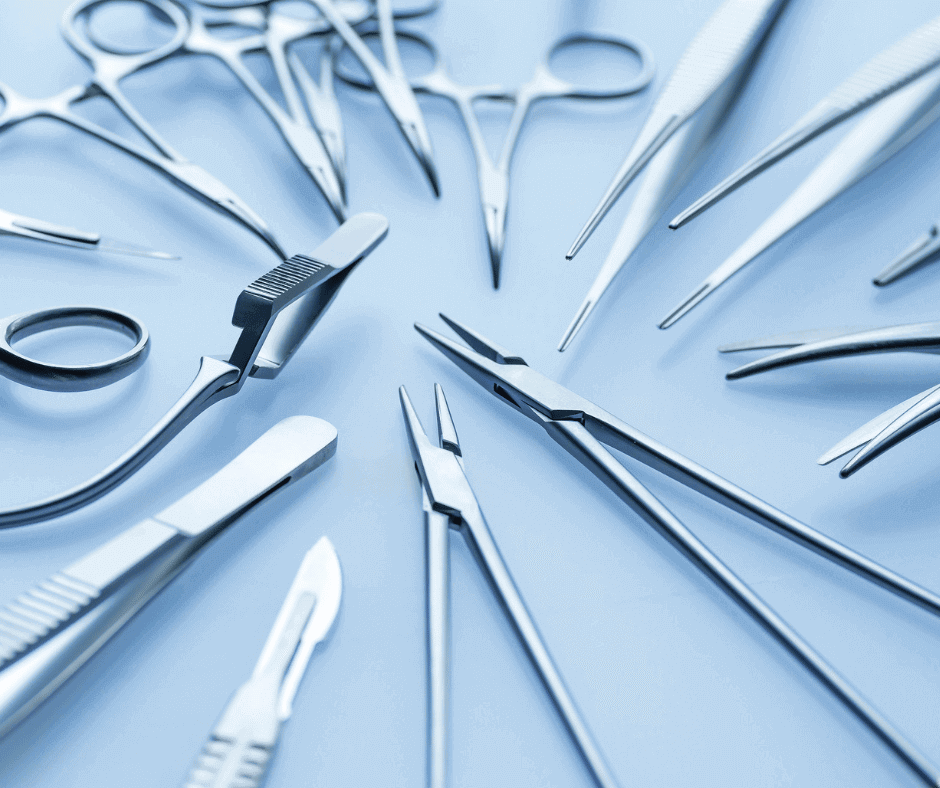As mentioned in our Classification and Grouping Guide, there are a series of rules to consider when classifying and grouping medical devices. The above-mentioned rules are fully explained in Appendix II – Supplement of medical devices of the Mexican Pharmacopeia (FEUM).
In this article we will focus on explaining strategies to classify and group surgical instruments following simple general rules. We also detail some particularities that can be found according to our everyday experience.
General characteristics of Surgical Instruments
Talk about surgical instruments can embrace a wide range of specialties. Nevertheless, in this article we will focus on those common supplies used in the medical practice during a surgery (e.g. forceps, scalpels, clamps, retractors, and scissors).
Manufacturers of these instruments generally manage catalogues with hundreds of models that vary in size and intended use. We have seen for years, that a normal practice in the manufacturing cycle is to receive an unprocessed instrument (or the raw material) from one country and processed it in another. This particular case, when the instruments are processed in different sites, is a key point to identify the real manufacturer –a relevant entity in regulatory terms.
Another key element about these type of instruments is the material. They are usually made of medical grade stainless steel, although the materials can also be as variable as the purpose and quality of the instruments. As mentioned, the manufacturer catalogue is generally extensive and the materials are not necessarily the same in such cases.
Every point described so far has regulatory implications that we will explain in the following section.
Classification according to the level of risk
Surgical instruments by its nature are classified as Class I medical devices in Mexico based on rule 6. This is applicable only for those instruments sold non-sterilized. For sterilized instruments from origin, the Ministry of Health in Mexico considers them as class II medical devices.
Grouping for Sanitary Registration purposes
The classification for Surgical Instruments is pretty straightforward. Yet, it is still necessary to consider a few points regarding the grouping criteria. Specifically, surgical instruments can be grouped in the same Sanitary registration if they:
- are made by the same manufacturer,
- have the same brand name or trademark and the same intended use or used for the same surgical procedure and
- are manufactured with the same materials and technology.
As referred at the beginning of this article, the manufacturer can be a not obvious entity to define. For instance, some countries consider the surgical instruments as low risk devices and exempt them of extensive review. Therefore, they get approval in industrialized countries (e.g. USA, Europe) but not in their country of origin. Unfortunately, these cases are troublesome since the approval from the country of origin is a requirement to register devices in Mexico. Then, we could have a surgical instrument manufacturer from India with FDA approvals, but selling under the name of a US company and not approved by the Ministry of Health in India. These cases must need to be evaluated prior any regulatory project is initiated.
Another challenge to consider is grouping thousands of products. This is common in these scenarios and we strongly advice to group the instruments based on its intended use and not necessarily for the same surgical procedure. Nevertheless, we also understand that grouping scalpels in one registration, retractors in another and so on, ends up in a considerable number of registrations and therefore, an economic investment to take in mind. This fact, and that Mexico represents an important contract manufacturer for surgical instruments worldwide, sets a difficult framework for foreign manufacturers. Therefore, the larger the number of codes (SKUs) planned to be included in a single registration, the more challenging the registration process will be.
As a side note, instruments for the orthopedic sector follows a standard presentation on which implants and instruments are sold in separate non-sterile trays. This make the grouping of the instruments easier. You can check more details about it in this article.
Thanks for reading this document. If you have any question about this topic, feel free to contact us at contact@veraqueconsulting.com or check our guidelines.

